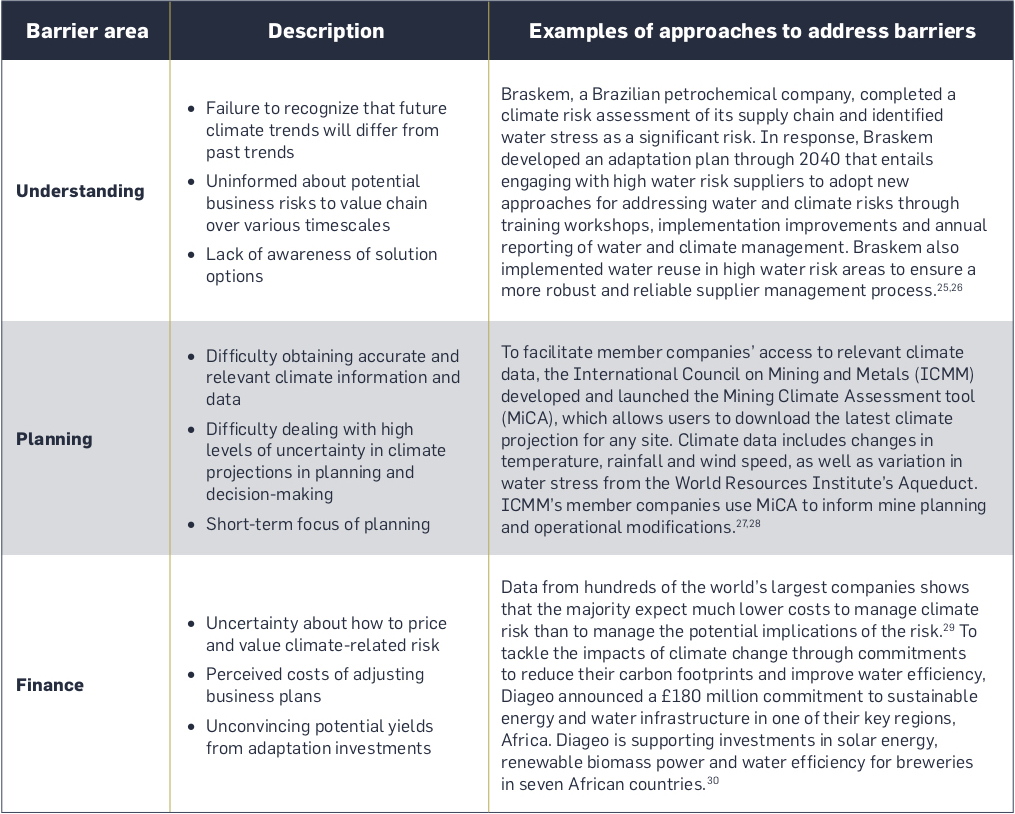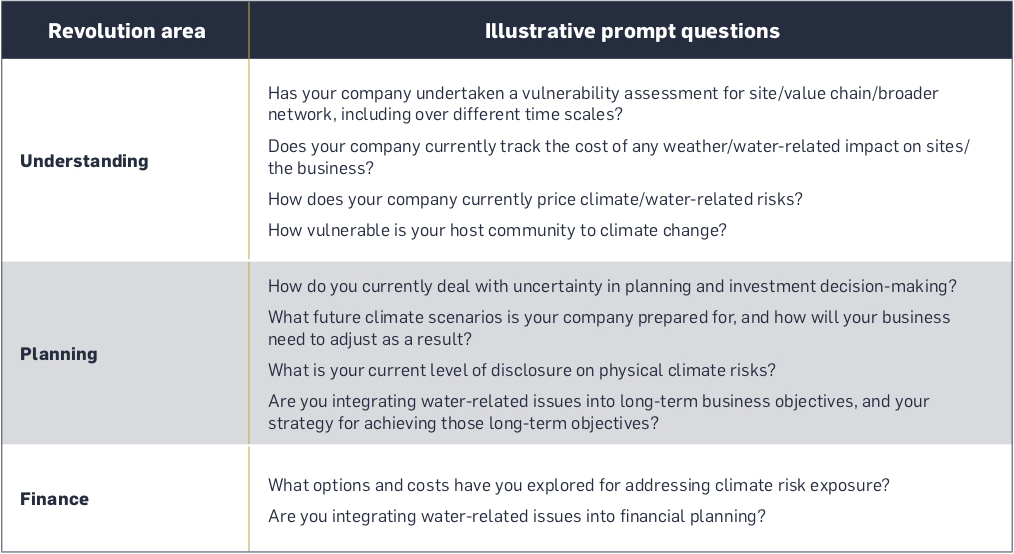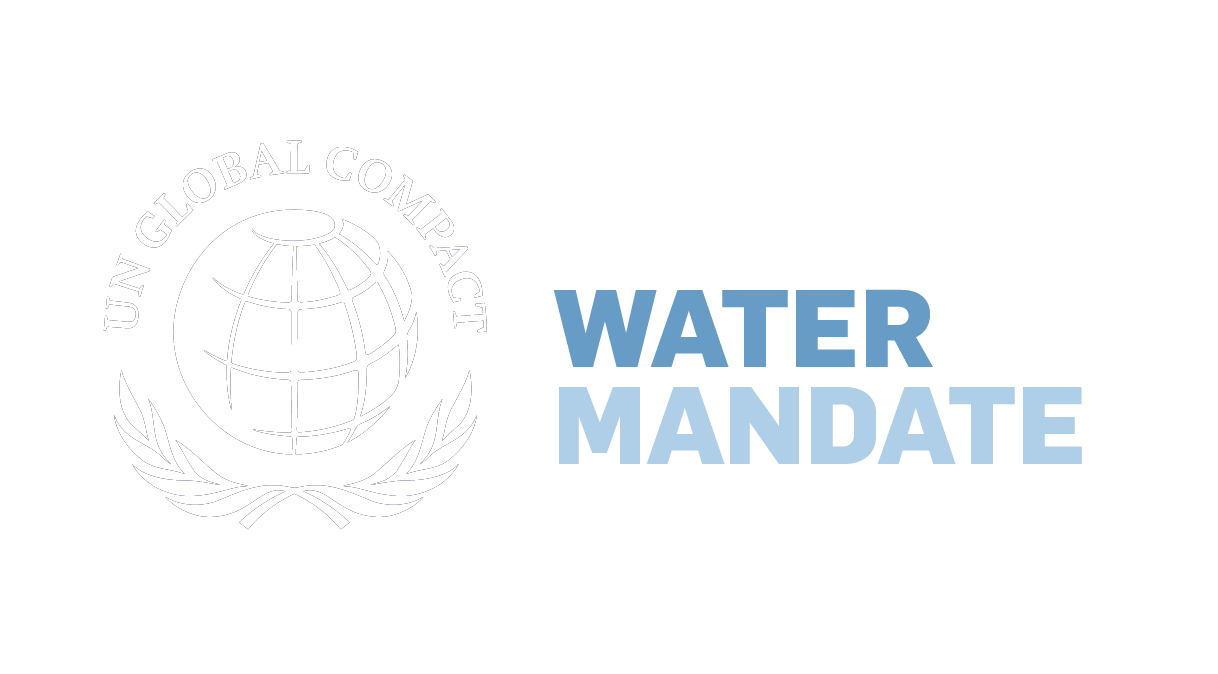The risky alternative to the proactive management of climate-related risks is for companies to learn by experiencing the full brunt of climate-related impacts. Yet like other groups across/within society, many companies have been slow to respond. Past planning and management efforts were typically based on the assumption of climate stationarity: assuming the past predicts the future.[efn_note]Smith, D.M. et al., Adaptation’s thirst: Accelerating the convergence of water and climate action, Background paper prepared for the 2019 report of the Global Commission on Adaptation, 2019.[/efn_note],[efn_note]McKinsey Global Institute, Climate risk and response – physical hazards and socioeconomic impacts, 2020.[/efn_note] However, it is now clear that this is no longer a valid assumption.
Uncertainty about the timing and severity of possible climate impacts are common reasons for inaction. However, companies are accustomed to making decisions within a large spectrum of uncertainty on a suite of factors, and a number of approaches have been developed to help companies deal with climate-related uncertainties (see Table 1 and Box 1).
Common barriers to company action, as well as illustrative examples of how companies and representative organizations have acted to circumvent them, are outlined in Table 1. The barriers have been framed around the three “revolution areas” put forward by the Global Commission for Adaptation to drive appropriate decision-making and the release of required public and private financial flows.[efn_note]Global Commission on Adaptation, Adapt now: A global call for leadership on climate resilience, 2019. https://cdn.gca.org/assets/2019-09/GlobalCommission_Report_FINAL.pdf[/efn_note]
Table 1. Common barriers to company actions on climate change and illustrative measures to overcome them[efn_note]Loechel, B. and Hodgkinson, J. H., Climate impacts and adaptation in Australian mining communities: industry and local government views and activities: 2013 follow-up survey, 2014, EP14694, CSIRO.[/efn_note],[efn_note]Climate Disclosure Standards Board and Sustainability Accounting Standards Board, TCFD Good Practice Handbook, 2019.[/efn_note],[efn_note]USAID, Addressing Climate Vulnerability for Power System Resilience and Energy Security: A Focus on Hydropower. RALI Series: Promoting Solutions for Low Emission Development. ICF International, Washington DC., 2017.[/efn_note],[efn_note]Peace, J. and Maher, K., Weathering the Next Storm: A Closer Look at Business Resilience 13, 26, Arlington: C2ES, 2015, https://www.c2es.org/publications/weathering-next-storm-closer-look-business-resilience.[/efn_note]

Table 2. Illustrative prompt questions for companies to assess their readiness to build resilience

